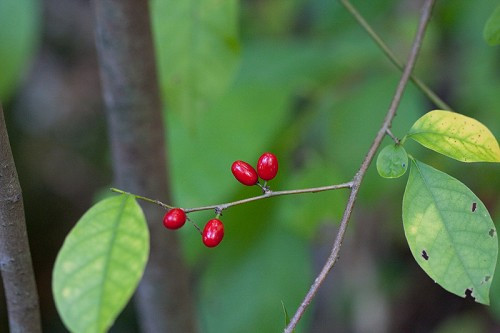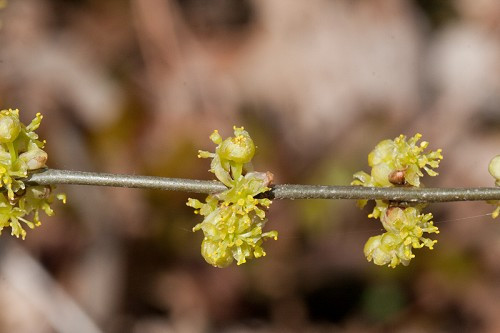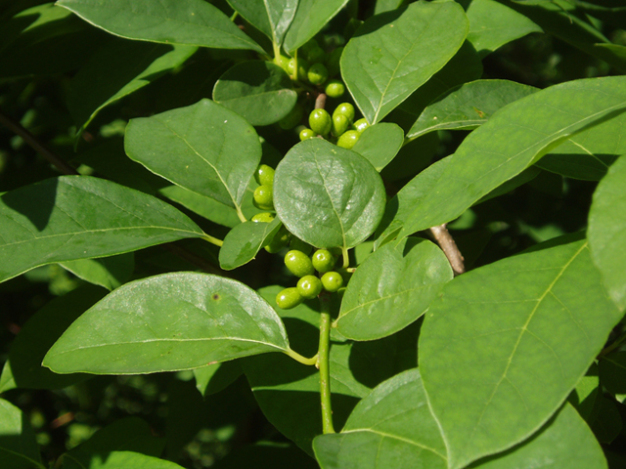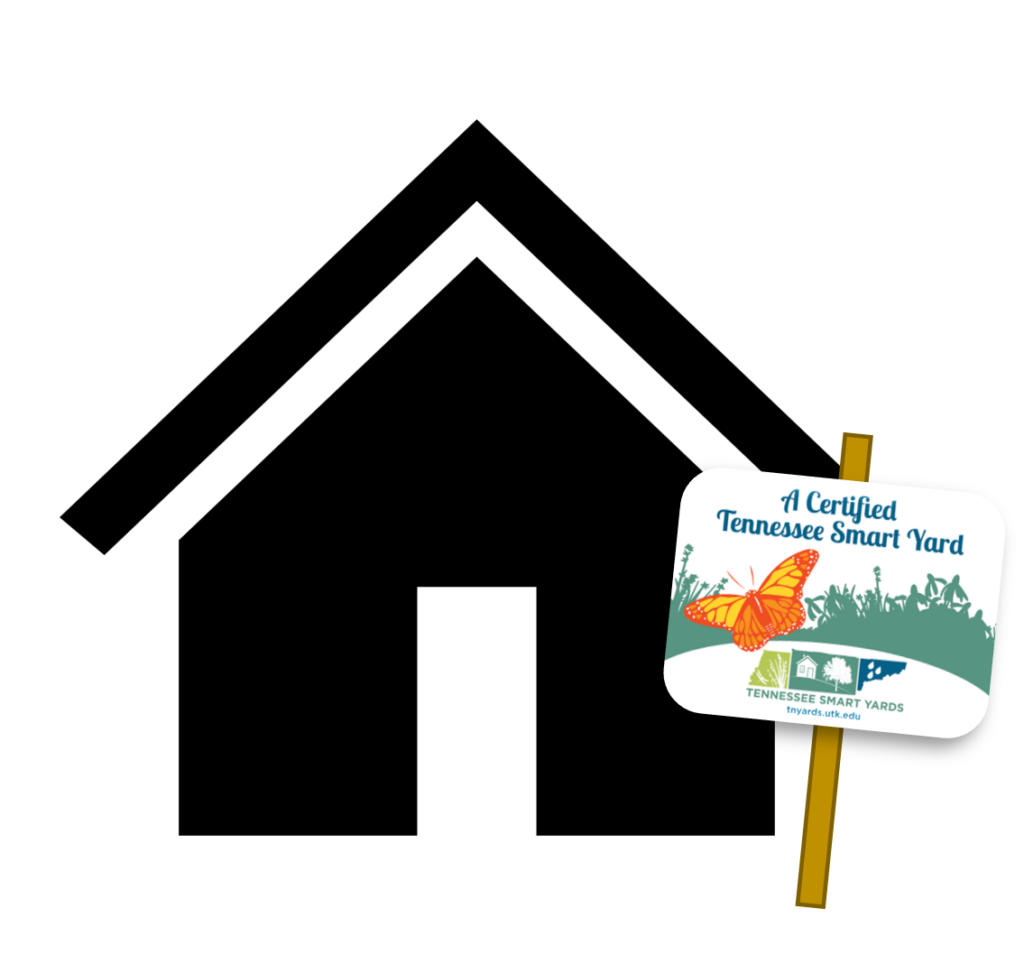
Common Name: Spicebush, Common Spicebush
Full sun to light shade; moderately wet to medium moisture level; best in fertile loam soil but grows in loamy sands, medium loams and silt loams; slightly acid to slightly alkaline pH.
6-12 feet height by 6-12 feet spread; blooms March-April; bright yellow flowers; female bushes produce football-shaped, bright scarlet berries in September.
Growth Rate: Slow to medium
Maintenance: Infrequent disease and insect problems
Propagation: Seed germination code C(105) or M. Moderately easy from seed but seeds that are allowed to dry out lose their viability.
Native Region: Statewide
Deciduous, multi-stemmed, understory shrub. This is a first-rate ornamental shrub with showy, fragrant flowers and leaves that turn a clear yellow color in fall. Crushed leaves give off the smell of a mix of cloves, anise, and musk, hence its common name. Occurs naturally in low woods, wooded swamps and pond shores and occasionally in drier uplands.
Quite adaptable to different lighting conditions. Can grow well in full sun if moisture level is maintained, and does fairly well in heavy shade but growth rate is slowed and flowering is reduced. Male and female are on different plants but there is no difference in flower quality between male and female plants. Female plants produce shiny oval fruits that eventually turn red in fall and are quickly consumed by birds. Female plants need a male pollinator in order to set fruit. High wildlife value; attracts birds, butterflies and bees, including the Spicebush Swallowtail which lays her eggs on the leaves. Cultivars available.


